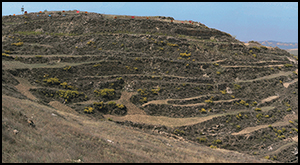Crossref Citations
This article has been cited by the following publications. This list is generated based on data provided by
Crossref.
Fiskesjö, Magnus
2018.
Ancient China reconsidered.
Antiquity,
Vol. 92,
Issue. 366,
p.
1671.
Witcher, Robert
2019.
Editorial.
Antiquity,
Vol. 93,
Issue. 369,
p.
563.
Dittmar, Jenna M.
Berger, Elizabeth
Zhan, Xiaoya
Mao, Ruilin
Wang, Hui
and
Yeh, Hui-Yuan
2019.
Skeletal evidence for violent trauma from the bronze age Qijia culture (2,300-1,500 BCE), Gansu Province, China.
International Journal of Paleopathology,
Vol. 27,
Issue. ,
p.
66.
Leppard, Thomas P.
2019.
Social Complexity and Social Inequality in the Prehistoric Mediterranean.
Current Anthropology,
Vol. 60,
Issue. 3,
p.
283.
Cui, Jianxin
Sun, Zhouyong
Burr, George S.
Shao, Jing
and
Chang, Hong
2019.
The great cultural divergence and environmental background of Northern Shaanxi and its adjacent regions during the late Neolithic.
Archaeological Research in Asia,
Vol. 20,
Issue. ,
p.
100164.
Anderson, Eugene N.
2019.
The East Asian World-System.
p.
83.
2019.
ANNUAL BIBLIOGRAPHY.
Early China,
Vol. 42,
Issue. ,
p.
347.
Sulas, Federica
and
Pikirayi, Innocent
2020.
From Centre-Periphery Models to Textured Urban Landscapes: Comparative Perspectives from Sub-Saharan Africa.
Journal of Urban Archaeology,
Vol. 1,
Issue. ,
p.
67.
Jaffe, Yitzchak
2020.
Encyclopedia of Global Archaeology.
p.
1.
Jaffe, Yitzchak
2020.
Encyclopedia of Global Archaeology.
p.
3473.
Li, Haichao
and
O’Sullivan, Rebecca
2020.
Diachronic change in the Shang dynasty ritual package.
Archaeological Research in Asia,
Vol. 23,
Issue. ,
p.
100210.
Sheng, Pengfei
Hu, Yaowu
Sun, Zhouyong
Yang, Liping
Hu, Songmei
Fuller, Benjamin T.
and
Shang, Xue
2020.
Early commensal interaction between humans and hares in Neolithic northern China.
Antiquity,
Vol. 94,
Issue. 375,
p.
622.
Wang, Ningyuan
Dong, Chuanwan
Xu, Honggen
and
Zhuang, Yijie
2020.
Letting the stones speak: An interdisciplinary survey of stone collection and construction at Liangzhu City, prehistoric Lower Yangtze River.
Geoarchaeology,
Vol. 35,
Issue. 5,
p.
625.
Jaffe, Yitzchak Y.
Castellano, Lorenzo
Shelach-Lavi, Gideon
and
Campbell, Roderick B.
2021.
Mismatches of scale in the application of paleoclimatic research to Chinese archaeology.
Quaternary Research,
Vol. 99,
Issue. ,
p.
14.
Honeychurch, William
Rogers, Leland
Amartuvshin, Chunag
Diimaajav, Erdenebaatar
Erdene-Ochir, Nasan-Ochir
Hall, Mark E.
and
Hrivnyak, Michelle
2021.
The earliest herders of East Asia: Examining Afanasievo entry to Central Mongolia.
Archaeological Research in Asia,
Vol. 26,
Issue. ,
p.
100264.
Berger, Elizabeth
Brunson, Katherine
Kaufman, Brett
Lee, Gyoung-Ah
Liu, Xinyi
Sebillaud, Pauline
Storozum, Michael
Barton, Loukas
Eng, Jacqueline
Feinman, Gary
Flad, Rowan
Garvie-Lok, Sandra
Hrivnyak, Michelle
Lander, Brian
Merrett, Deborah C.
and
Ye, Wa
2021.
Human adaptation to Holocene environments: Perspectives and promise from China.
Journal of Anthropological Archaeology,
Vol. 63,
Issue. ,
p.
101326.
Womack, Andrew
Liu, Li
and
Di, Nan
2021.
Initial insights into ceramic production and exchange at the early Bronze Age citadel at Shimao, Shaanxi, China.
Archaeological Research in Asia,
Vol. 28,
Issue. ,
p.
100319.
He, Yahui
Liu, Li
Sun, Zhouyong
Shao, Jing
and
Di, Nan
2021.
“Proposing a toast” from the first urban center in the north Loess Plateau, China: Alcoholic beverages at Shimao.
Journal of Anthropological Archaeology,
Vol. 64,
Issue. ,
p.
101352.
Tang, Zihua
Wang, Xueye
Xiao, Jun
Chen, Xianglong
Hu, Songmei
Yang, Miaomiao
Tian, Yaqi
and
Yuan, Jing
2022.
Livestock supply to an imperial sacrificial site of the early Chinese empires evidenced by strontium isotope ratios.
Frontiers in Earth Science,
Vol. 10,
Issue. ,
Wolin, Daniela
2022.
Decapitated Heads as Elite Visual Culture in Late Shang China.
Cambridge Archaeological Journal,
Vol. 32,
Issue. 2,
p.
189.



